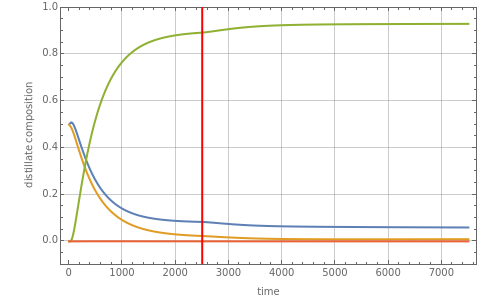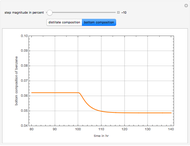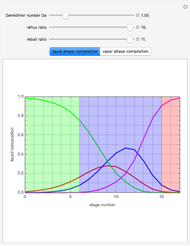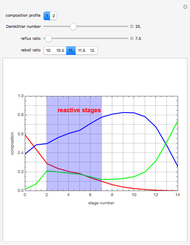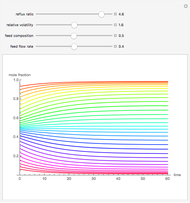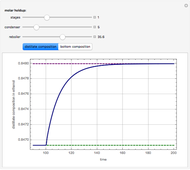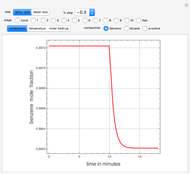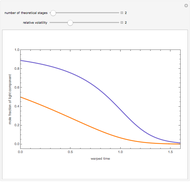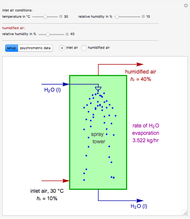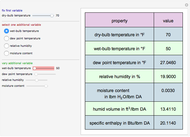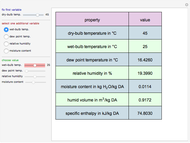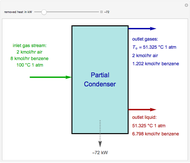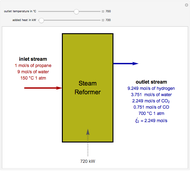Dynamic Behavior of a Reactive Distillation Column Subject to a Reflux Ratio Step

Requires a Wolfram Notebook System
Interact on desktop, mobile and cloud with the free Wolfram Player or other Wolfram Language products.
Consider a quaternary mixture of components  ,
,  ,
,  , and
, and 
 with relative volatilities
with relative volatilities  ,
,  , and
, and  . This mixture is subject to an equilibrium-limited chemical reaction
. This mixture is subject to an equilibrium-limited chemical reaction  with reaction rate
with reaction rate  , where the equilibrium constant
, where the equilibrium constant  . The mixture is fed to a reactive distillation column with 15 plates. The feed stage location is stage number 10, the reactive stages are stages 6–14, and the feed composition is equimolar in
. The mixture is fed to a reactive distillation column with 15 plates. The feed stage location is stage number 10, the reactive stages are stages 6–14, and the feed composition is equimolar in  and
and  (i.e., the feed is composed of 50 mole %
(i.e., the feed is composed of 50 mole %  and 50 mole %
and 50 mole %  ). The feed, a saturated liquid, has a flow rate of 10 kmol/min. For simplicity, constant molal overflow (CMO) is assumed and heat effects are neglected.
). The feed, a saturated liquid, has a flow rate of 10 kmol/min. For simplicity, constant molal overflow (CMO) is assumed and heat effects are neglected.
Contributed by: Housam Binous, Selmi Manel, Ines Wada, and Ahmed Bellagi (March 2011)
Open content licensed under CC BY-NC-SA
Snapshots
Details
Permanent Citation
